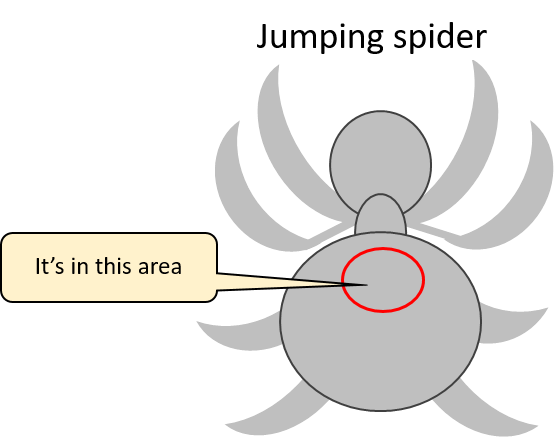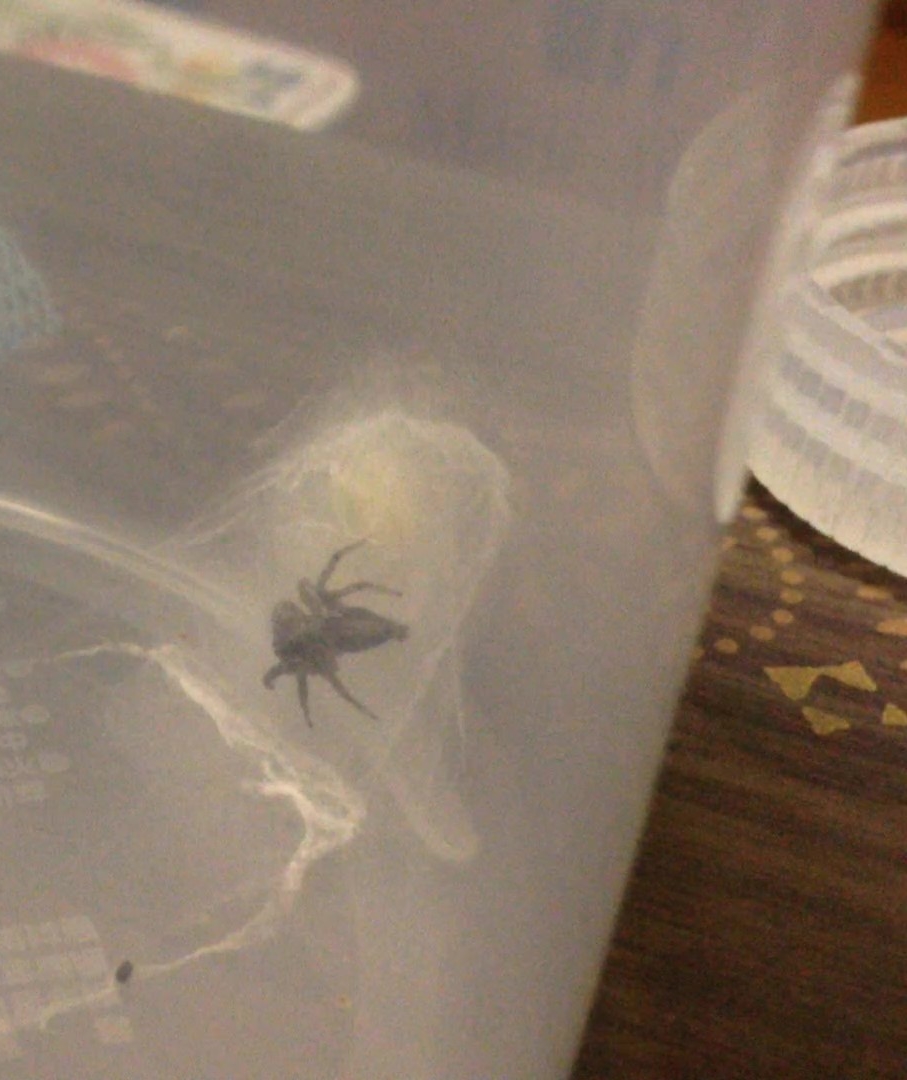I’ve written an article before about observing predatory observations of the jumping spider.
In this article, I was able to observe the flytrap spider laying its eggs, and I will write about it.
Also, just like humans, spiders breathe through their respiratory organs, known as lungs. It’s quite interesting.
This is called “calligraphy lungs” and I learned a lot about spiders when I was in student.
I remember getting curious about it, so I scoured the book to read and learn about it.
These calligraphic lungs are located in the belly of the spider, in the area shown below.


The jumping spider I was observing gave birth to a flytrap spider.
It had been a few days since the last predation photo.
Suddenly, the fly spider began to build a dome-shaped nest.
Layer upon layer of thread, gradually forming a dome.
This was a surprise to me.
I had assumed that because it was a roaming spider, it would not build a web.
Moreover, this dome-shaped nest was quite beautiful.
It may be closer to “Kamakura” than a dome, where the nest is made while leaving space for itself to enter.
This dome-shaped nest was completed and the jumping spider I had been observing for a few days was caged in.
Gradually, a yellow object is generated inside the dome-shaped web.
That’s right, this is……..the spider’s egg to called egg sac. There are a lot of little eggs in egg sac.
And this is a picture of that time.
